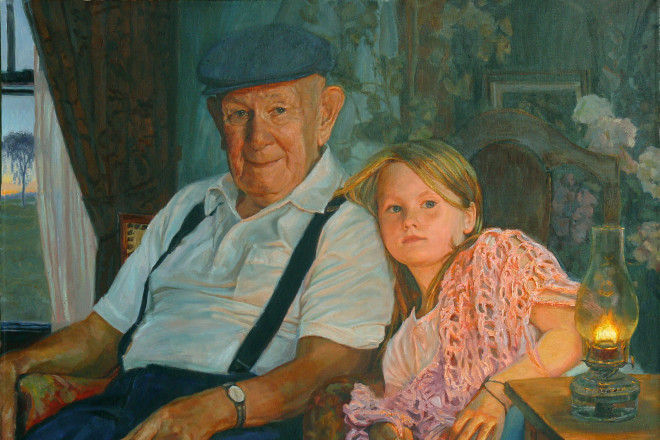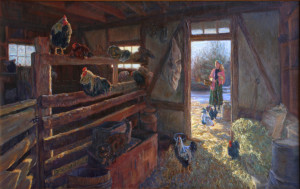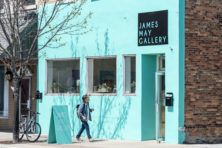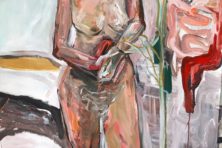Questions & Artists: James Hempel
- Share
- Tweet
- Pin
- Share

I first met James Hempel five years ago at the Plymouth plein air festival late in fall. The day was cold and windy and when we started to paint, the thermometer at a bank across the street from my spot read 39 degrees.
The day was a story itself with spilled water, frozen paint and a 30 mph wind but we both survived and after turning in our paintings, several of us, including James, sat and talked for more than an hour.
James is a classically trained artist whose work I think reflects his attention to detail. Impeccable composition is seen in all his work. His website is jameshempel.com. I hope you enjoy this interview with this thoughtful, perceptive artist.
Randy Rasmussen (RR): James, when did you realize how much you enjoyed art?
James Hempel (JH): Thinking back, I can remember always enjoying the sensory interaction with the visual nature of the world. I grew up being exposed to art in our home. It was a wonderful environment.
RR: As you grew up in Appleton, was there someone or multiple individuals who encouraged you in your early artistic endeavors?
JH: My parents both were very encouraging in anything I wanted to do. My grandmother was an art professor, so I would say first my family. My mother, who before having children was a teacher, provided me with pencils and crayons. I remember in kindergarten having tempera paints with the huge brushes and lined up easels. Even then I enjoyed standing and painting.
RR: What high school did you attend in Appleton? Do you remember a significant art class you had in high school?
JH: I went to Appleton East High School. I took some art classes but I think in retrospect I could have taken more. I was in band and that took up time but I always, even in high school, drew and painted.
RR: I think of you as being a “renaissance man.” Not often in my more than seven years of interviews have I seen an artist who has had your background in math and science. Has this background helped in your art career?
JH: I think my interest in science and math did in one sense help me understand the organic nature of art. My degree is in biology and I have always enjoyed going to natural history museums. Once again I think it helped in my visual orientation of the world. In college I did portraits as I continued to refine my artistic skills and at graduation I started teaching in Shorewood and Whitefish Bay as a substitute.
RR: Can you describe your training at the Atelier Prohl in Milwaukee?
JH: Initially the training emphasizes drawing, first in graphite then with charcoal. It is rigorous training that has been done in the past in France, Holland and Germany. It literally has a lineage to the 19th century.
RR: How much did this training affect your current work?
JH: I think the training was invaluable. My initial drawing, my color mixing, and especially my color sensitivity all have been improved from my training.
RR: How do you describe your current work?
JH: I am a representative artist. Maybe a bit impressionist, a bit expressionistic. I know the value of a strong drawing. I like to see the effect of light in a good, solid painting.
RR: What is your current palette and has it changed over the years?
JH: I now use a standard broad palette. At the Atelier we progressed from black and white to color. I still find myself thinking initially of value.
RR: What is a James Hempel workshop about?
JH: First it is about fun. I try to work hard, encourage students to challenge themselves and reach.
RR: What do you enjoy about plein air painting?
JH: I simply enjoy “being out there,” whatever the weather; meeting people, feeling the temperature, seeing the ever-changing shadows, the colors. To me there is nothing better.
RR: Thank you.





